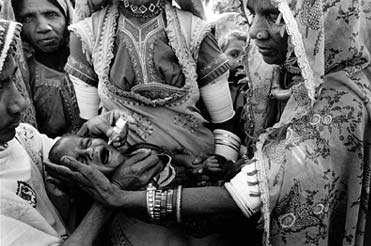
In the early 1980s, the odds for conquering polio appeared long. An international campaign would need to reach virtually all children under five– hundreds of millions -- most of them in countries lacking comprehensive vaccination programmes. It would have to bridge political divides, cross warring frontlines, and reinforce or completely rebuild health systems. Everyone from politicians to parents would have to join the effort, which required substantial and sustained funding.
By mid-decade, several factors converged to make eradication possible. UNICEF and WHO, working with governments worldwide, were rapidly expanding routine immunization against six major childhood diseases, including polio, reaching almost three-quarters of the world's children under age two. Latin American countries were carrying out successful mass polio immunizations, providing the model for global efforts. Rotary International, with members in 163 countries, started a fund-raising drive for polio eradication that would go on to raise more than US $500 million.
In 1988, the stage was set. At the 41st World Health Assembly, the world's health ministers unanimously approved a global campaign to eradicate polio. Fourteen years later, fewer than 500 new polio cases remained worldwide -- and complete eradication was imminent.
Yet, these huge gains are still not permanent. Until the number of new polio cases in the world is zero, the wild poliovirus can still rebound, striking unvaccinated children any time and anywhere. With global polio eradication almost within our grasp, the need for sustained political commitment and comprehensive funding has never been more critical.

© Sebastião Salgado
Pakistan
An infant is immunized in the village of Hiro-Jo Whandhio in the Thar Desert near the border with India.
 |